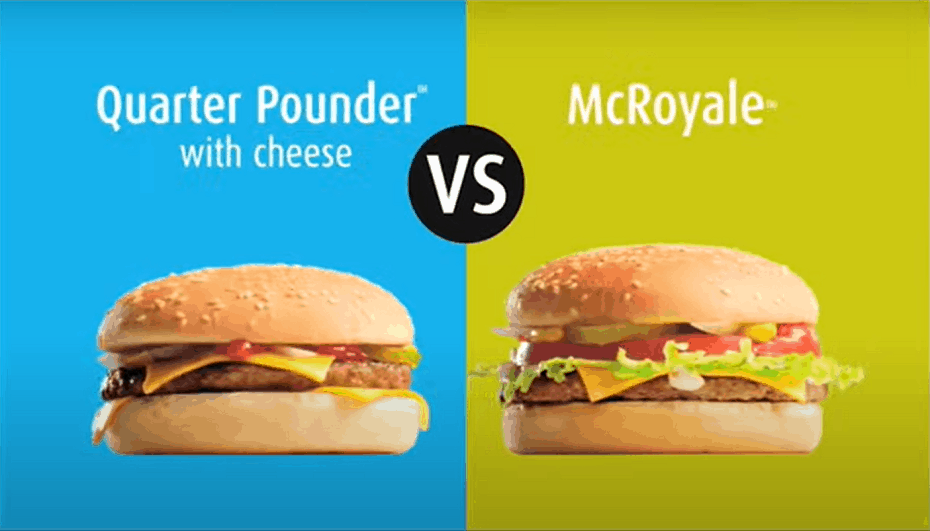New studies show that people prefer to buy products sold in their own language. But why is it important to localize your business when you expand into other countries? And what’s the difference between translation and localization anyway?
First, let’s clarify a few terms:
Translation means transferring words from one language to another.
Localization means adapting something to fit the cultural context of a new market. Translation is just the beginning: for example, the McDonald’s Quarter Pounder™ becomes a McRoyale™ in countries that don’t use the imperial measuring system.
New markets, new norms
If you want customers to feel that your products are an authentic part of their lives, you’ll need to pay attention to local norms. What are the legal and cultural standards in your target country? How does your target group typically behave? Do their babies come from storks or peaches? And what adjustments will you have to make to your texts in order to appeal to these new customers?
Online shopping in Europe and Asia follows different rules to online shopping in the US. And even within these regions, there are significant differences from country to country – encompassing everything from user behavior and customer support to the order process and a site’s look and feel. Let’s take a look at some examples.
Payment methods: Russia and Japan prefer cold hard cash
If you want to crack a new market, you need a way for your intended customers to give you their money. But pick the wrong one, and you’ll scare them off faster than you can say “PayPal”. Credit cards may be the online go-to in the US and parts of Europe, but not elsewhere: the Japanese, for example, prefer to pay for online purchases using cash in a nearby corner shop, or “konbini”. Russians are also fans of handing over cash at kiosks and of e-wallets, while cash on delivery is the preferred payment method for India. Online shoppers in China are higher-tech, using Alipay, which is internet giant Alibaba’s answer to Google or Apple Pay. Meanwhile, over in Europe, Germans prefer PayPal, while the Swiss go old-school with purchase on account.
Web design: classy chic or colorful chaos?
From Amazon to Apple, minimalist monochrome landing pages demonstrate that Western consumers prefer pared-down, highly structured sites. They want a homepage with minimal information but a clear overview of the site’s content. In China, by contrast, websites tend to be jam-packed with content and eye-catchingly colorful. Images predominate, and product listings vary from user to user thanks to extensive personalization. And there’s a cultural reason behind the attention-grabbing colors, too: while white has connotations of cleanliness and purity for Western users, those in Asia are more likely to associate it with death.
From reviews to chatbots: search and purchasing behavior
The keywords that customers use to find your products and services vary from market to market. And from search engine to search engine: what Google is to the US, Baidu and Yandex are to China and Russia. Each country therefore requires its own SEO strategy based on a detailed understanding of how consumers get their information. For example, eBay users rely on ratings from other customers to choose a seller. On the Chinese equivalent Taobao, however, ratings are just the beginning: users then build up a relationship with the seller via chat. Also chatbots have long been part of everyday transactions in Asia. The qualities that customers most value in a company also vary from country to country: in the US, it’s express delivery, whereas in Asia it’s a customer service department that’s available around the clock, and in Europe it’s free returns.
Advertising: emotional vs. neutral
Cultural differences in web presences also extend to advertising – and although we don’t recommend relying on cultural stereotypes in your localization process, there’s often a grain of truth to them. While emotional aspects such as brand loyalty and customer testimonials predominate in US advertising, German ads rely more on cold hard facts – and a solid price-performance relationship. Meanwhile, you might expect advertising in the UK to be closer to that of the US, as the two countries share a language. Interestingly, however, UK ads are more restrained than their US counterparts. Why? It turns out that the qualities that British consumers value most in their products and services are reliability and safety, and the advertising reflects this.
Hopefully you’ve now got your head around some of the most important aspects of localization, though we’ve only scratched the surface of the many cultural, legal and organizational factors that can play a role. If nothing else, you now know that creating an authentic user experience in a new market requires far more than just translation!
Cover image: McDonald’s via YouTube
